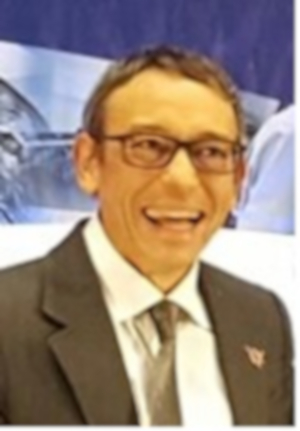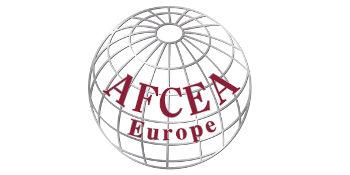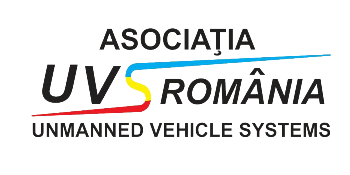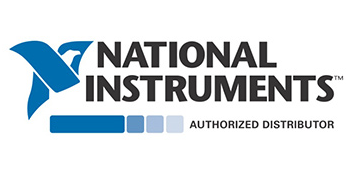MetroAeroSpace 2019 will be hosting a series of tutorials in the area of instrumentation and measurement for aerospace, and proposals are invited from industrial and research community.
SESSION 1 - Optical metrology for measuring Earth’s gravity
Stefano Cesare
Thales Alenia Space
ABSTRACT - The analysis of Earth’s gravitational field provides unique information, not achievable with other techniques, about the morphology and composition of our planet and on all geophysical phenomena involving the redistribution of its mass.
Global maps of Earth’s gravity can be obtained in short timescales only using satellites. The current demand of monitoring the variations of Earth’s gravity with higher and higher spatial and temporal resolution can be fulfilled exploiting the satellite-to-satellite tracking technique together with the laser interferometry. The effectiveness of this measurement technique was fruitfully demonstrated by the US-German GRACE (Gravity Recovery and Climate Experiment) mission (2002-2017) using a microwave ranging instrument (MRI). Recently, the GRACE Follow-On (GFO) mission, launched in 2018 and still using the MRI as primary payload, has carried and successfully operated on orbit for the first time the technological demonstrator of a laser interferometer. The Next Generation Gravity Mission (NGGM), under study since more than a decade in Europe, will be optimized for exploiting at best the performance of the laser interferometer for enhancing by more than a factor two the spatial and temporal resolution of the gravity field maps provided by GRACE and GFO.
In this lecture the principle of the satellite-to-satellite tracking technique for measuring Earth’s gravity will be explained and the laser interferometer schemes under study for the NGGM will be presented. The role of the mission architecture and of the auxiliary measurement instruments in achieving the mission objectives will be also discussed.
 Stefano Cesare received the degree in Physics from University of Torino, Italy in 1985. Since 1987 he has been working in Thales Alenia Space in Italy where he is currently the Product Line Manager for the Science Spacecraft and Payloads. He has been the mission & payload performance engineer of the Gravity and Ocean Circulation Explorer (GOCE) mission that flown between 2009 and 2013 providing a high-resolution map of Earth’s gravity, and managed some of the preparatory studies and technological development projects on the laser metrology for the Next Generation Gravity Mission (NGGM). Stefano Cesare has authored/co-authored several publications (technical papers, book chapters, patents) about Earth’s gravity missions and related technologies.
Stefano Cesare received the degree in Physics from University of Torino, Italy in 1985. Since 1987 he has been working in Thales Alenia Space in Italy where he is currently the Product Line Manager for the Science Spacecraft and Payloads. He has been the mission & payload performance engineer of the Gravity and Ocean Circulation Explorer (GOCE) mission that flown between 2009 and 2013 providing a high-resolution map of Earth’s gravity, and managed some of the preparatory studies and technological development projects on the laser metrology for the Next Generation Gravity Mission (NGGM). Stefano Cesare has authored/co-authored several publications (technical papers, book chapters, patents) about Earth’s gravity missions and related technologies.
SESSION 2 - Probabilistic-Risk-Analysis in Aerospace Human-in-the-Loop Problems
Ephraim Suhir
Portland State University, US
ABSTRACT - There is a significant potential for the reduction in aerospace accidents and in assuring mission success and safety through better understanding the roles that various uncertainties play in the planner’s and operator’s worlds of work. In this review lecture the rationale behind the probabilistic risk analysis (PRA) incentive in aerospace human-in-the-loop (HITL) related tasks, including decision making problems and tasks, is explained, and several recently suggested PRA models are indicated and briefly discussed: convolution model, with applications to the helicopter-landing ship (HLS), the famous miracle-on-the-Hudson event and the concept of anticipation in aviation; route segmentation model, with application to an aerospace mission outcome and double-exponential-probability-distribution-function (DEPDF) model for the probability of human non-failure, with application to the relative roles of the human capacity factor (HCF) and mental workload (MWL). The multi-parametric BAZ equation was suggested by the author about a decade ago as a physically meaningful predictive model in the probabilistic-design-for-reliability (PDfR) concept, when the highly focused and highly cost-effective failure-oriented accelerated testing (FOAT) data are used to predict the operational reliability of aerospace electronics. Boltzmann-Arrhenius equation has a strong physics-of-failure background and has been used in a number of materials reliability related equation, when there was a belief that elevated temperature is the major cause of failure. BAZ equation is used when the external stress and elevated temperature contribute jointly to the finite lifetime of a material or a device. It is shown that PRA based on the multi-parametric BAZ equation can be successfully applied in many aerospace safety related situations, when equipment/instrumentation reliability, human performance, uncertain and often harsh environment and their interfaces contribute jointly to the possible outcome of an aerospace mission or an extraordinary situation. It is concluded that PRA HITL models can be applied in various aerospace engineering tasks and problems, when human qualifications and performance are crucial and therefore the ability to quantify them is imperative. The developed models enable to predict the probability of a successful outcome of aerospace missions or off-normal situations and can be used also in many other fields of applied science and engineering, when a human encounters an extraordinary situation, and should possess a sufficiently high HCF to cope with an elevated MWL. The application of the considered and possibly other quantification models will hopefully narrow the existing wide gap between the mindsets and activities of the aerospace system engineers and human psychologists.
 Ephraim Suhir is Foreign Full Member (Academician) of the National Academy of Engineering, Ukraine (he was born in that country); Life Fellow of the Institute of Electrical and Electronics Engineers (IEEE); the American Society of Mechanical Engineers (ASME), the Society of Optical Engineers (SPIE) and the International Microelectronics and Packaging Society (IMAPS); Fellow of the American Physical Society (APS), the Institute of Physics (IoP), UK, and the Society of Plastics Engineers (SPE); and Associate Fellow of the American Institute of Aeronautics and Astronautics (AIAA). Ephraim has authored about 400+ publications (patents, technical papers, book chapters, books), presented numerous keynote and invited talks worldwide, and received many professional awards, including the 1996 Bell Labs Distinguished Member of Technical Staff Award and the 2004 ASME Worcester Read Warner Medal for outstanding contributions to the permanent literature of engineering. He is the third Russian American, after Stephen Timoshenko and Igor Sikorsky, who received this prestigious award.
Ephraim Suhir is Foreign Full Member (Academician) of the National Academy of Engineering, Ukraine (he was born in that country); Life Fellow of the Institute of Electrical and Electronics Engineers (IEEE); the American Society of Mechanical Engineers (ASME), the Society of Optical Engineers (SPIE) and the International Microelectronics and Packaging Society (IMAPS); Fellow of the American Physical Society (APS), the Institute of Physics (IoP), UK, and the Society of Plastics Engineers (SPE); and Associate Fellow of the American Institute of Aeronautics and Astronautics (AIAA). Ephraim has authored about 400+ publications (patents, technical papers, book chapters, books), presented numerous keynote and invited talks worldwide, and received many professional awards, including the 1996 Bell Labs Distinguished Member of Technical Staff Award and the 2004 ASME Worcester Read Warner Medal for outstanding contributions to the permanent literature of engineering. He is the third Russian American, after Stephen Timoshenko and Igor Sikorsky, who received this prestigious award.





































